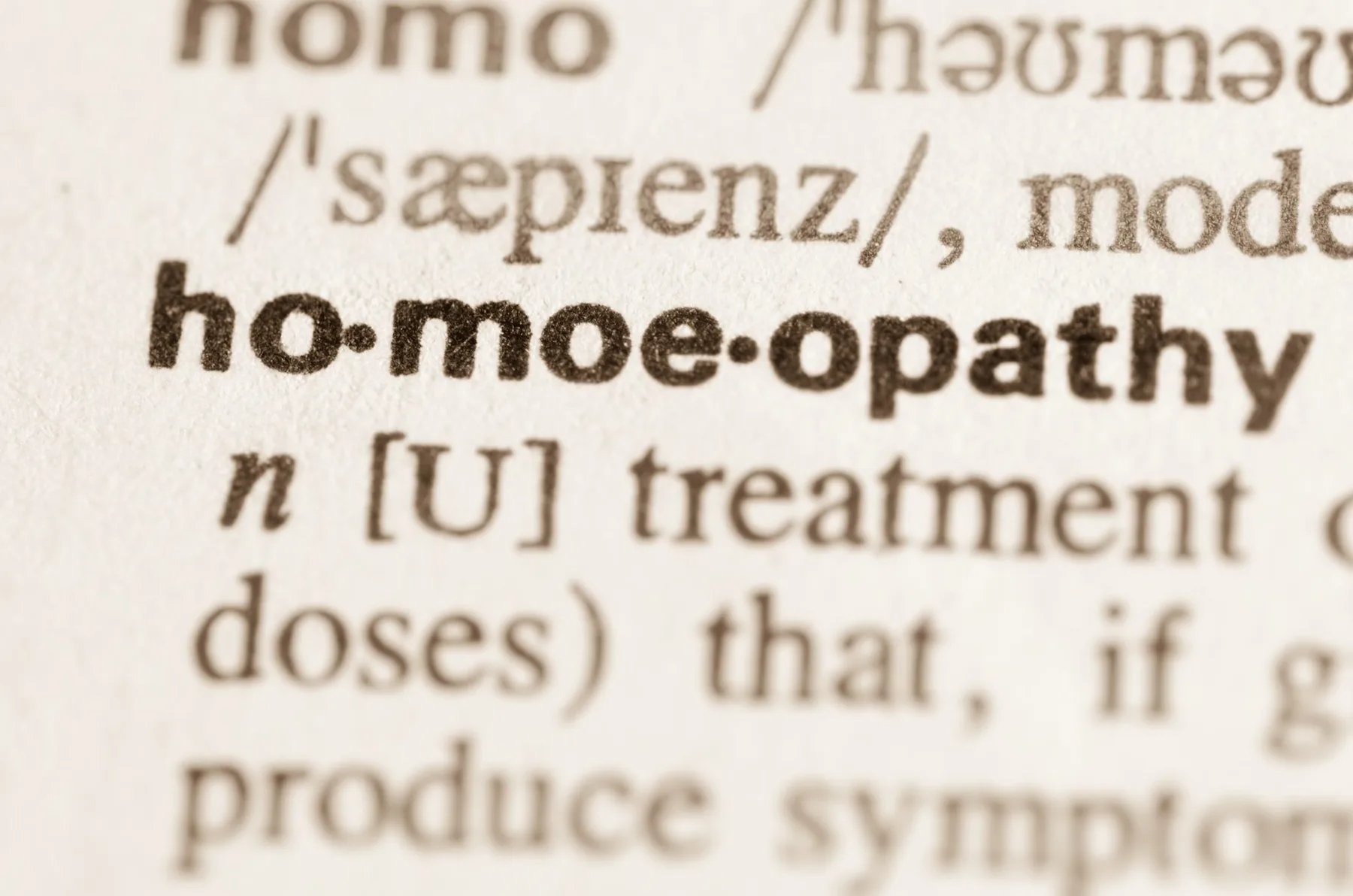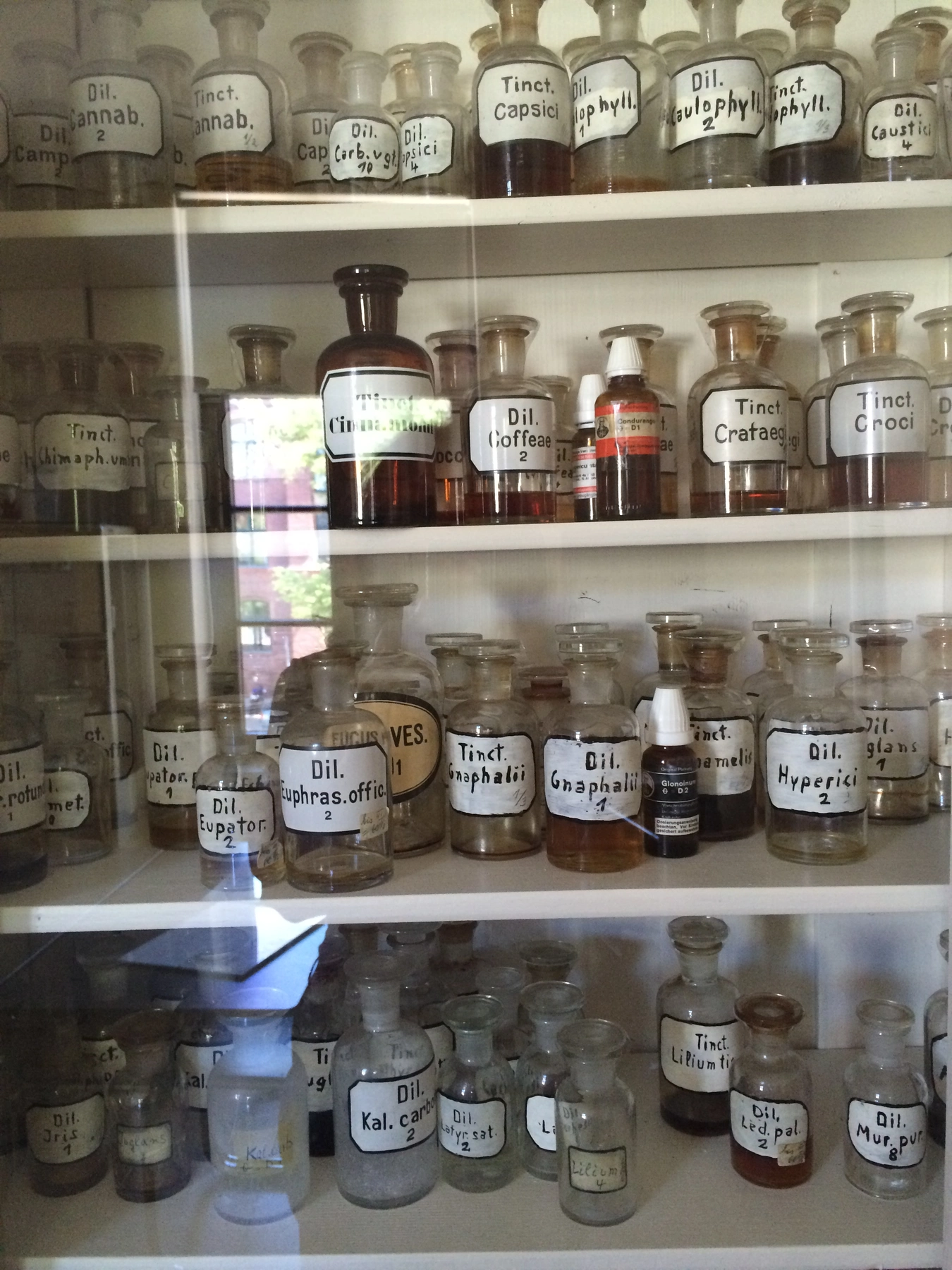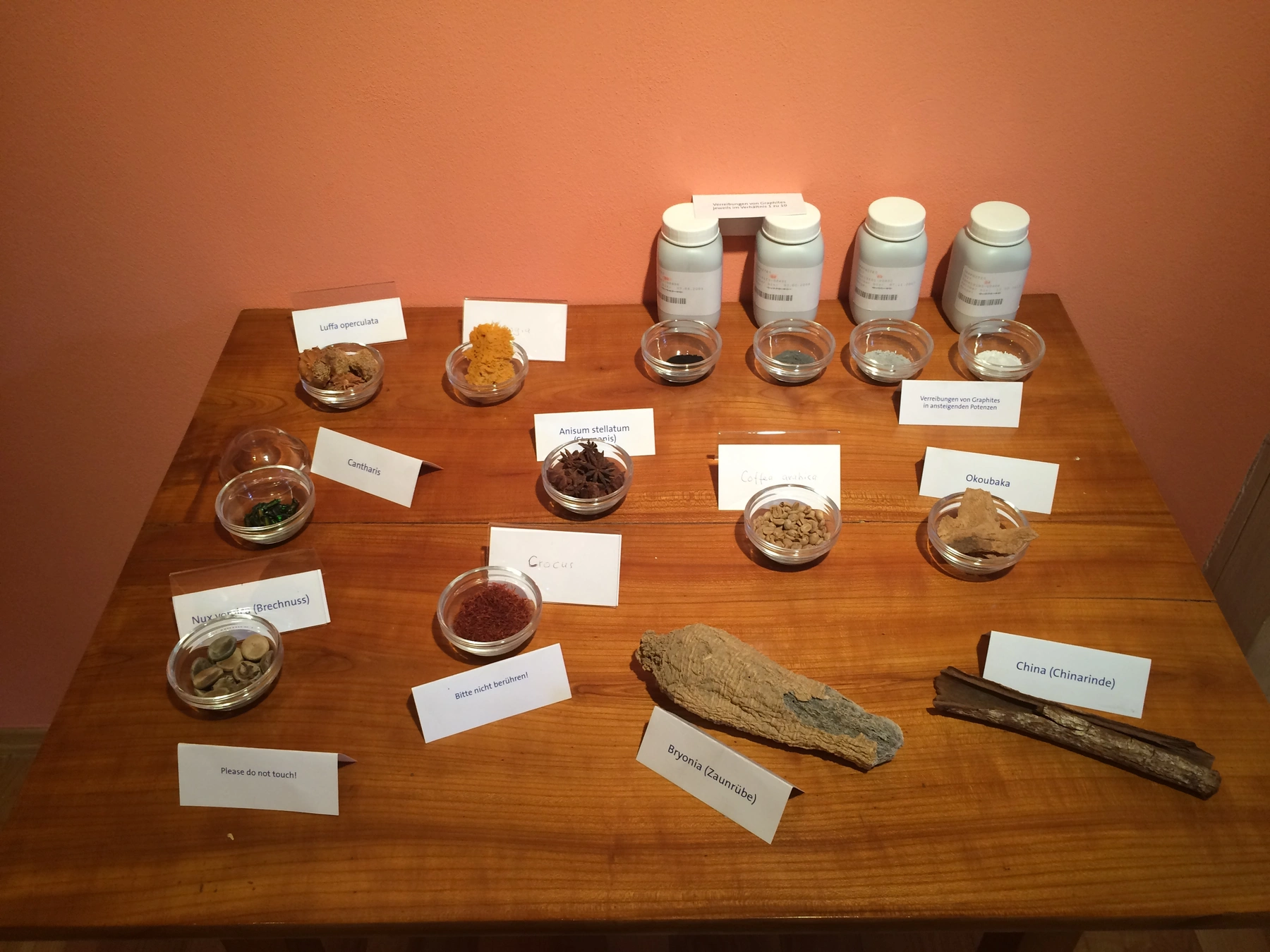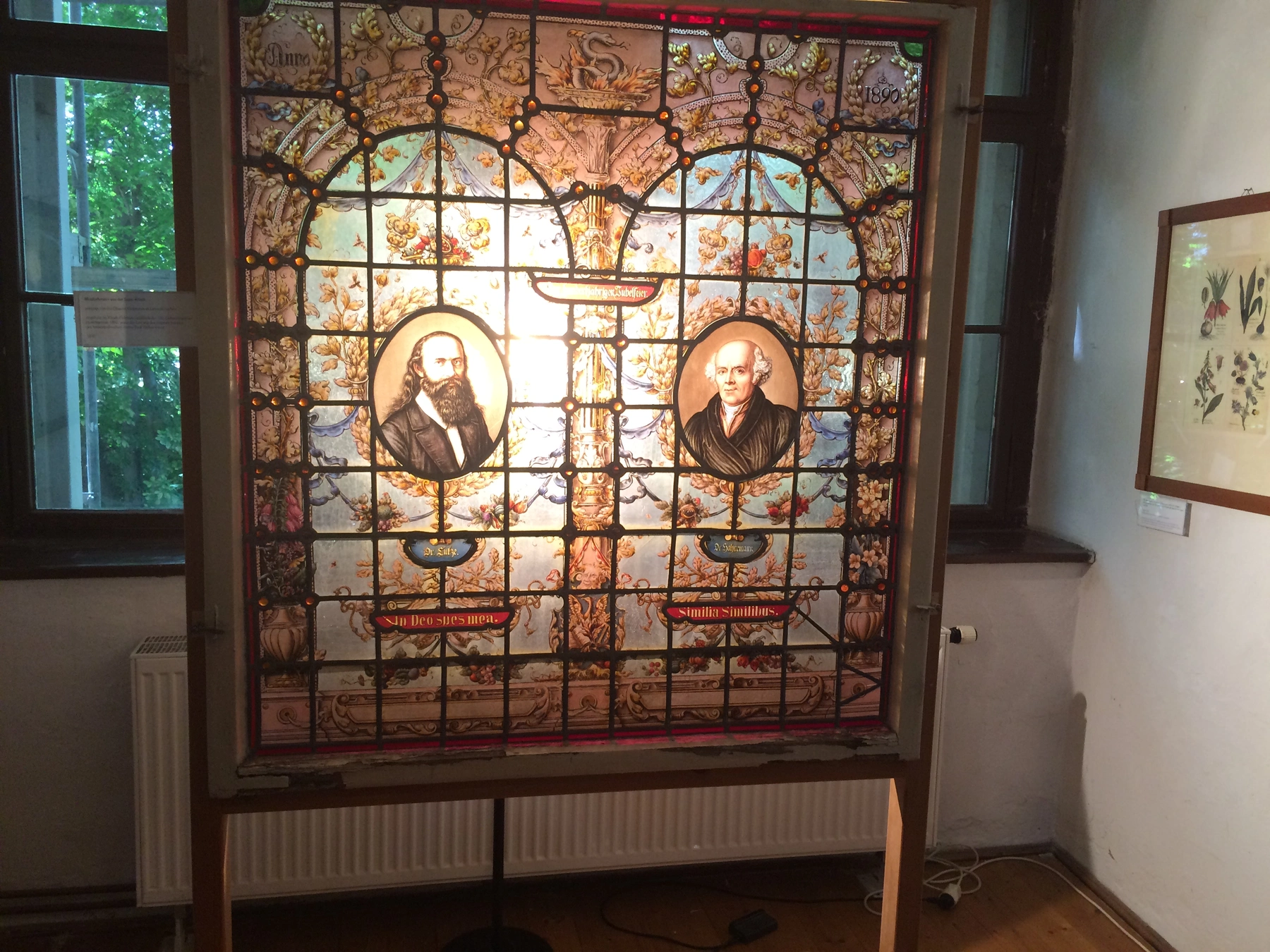
The Most Common Misconceptions about Homeopathy
It's not just a collection of a few remedies, but a new science with a rational philosophy as its base.

Ancient Times
The idea of treating like with like dates to ancient times.
In the West, Hippocrates, the ancient Greek physician who lived from 460 to 377 BCE, known as the father of Western medicine, is the most famous proponent. He wrote, "Disease is produced through similarity, and by applying the like is cured". However, this principle dates to prehistoric times.
According to the Department of Homeopathy, Delhi territory of the Indian government: "Ancient Hindu physicians recognized the 'Law of Similars' as one of the principles of healing: 'Vishasya Vishmoshadhi', say the Sanskrit proverbs. The Delphic oracle (8th century BCE) declared: "What makes sick shall heal".
Numerous physicians throughout history have used the 'Law of Similars' in their practice: Nicander of Colophon (2nd century) Xenocrates of Chalcedon (396-314 BCE) from the Greek school; Marcus Terentius Varro (116-27 BCE), Quintus Sammonicus Serenus (2nd-3rd century CE), Celsus (2nd century CE), and Claudius Galen (129 – about 200 or 216 CE) from the Roman schools; Basil Valentine (about 15th century CE); then Paracelsus (1493-1541), Georg Ernst Stahl (1660-1734), Georg Christoph Detharding (1699-1784), Anton Baron von Störck (1731-1803), etc.
"The father of modern immunology," Dr. Emil Adolph Von Behring, openly pointed to the origin of immunization by stating: "What technical term could we speak more aptly of this effect than Hahnemann's word 'homeopathy.'" (Modern physio genetic and physiotherapeutic problems in historical illumination, Section V, New York, 1906.)"
It took 22 centuries, from the emergence of Hippocrates to Christian Friedrich Samuel Hahnemann, for homeopathy to be established in the 19th century as a rational system of medical practice, founded on Hahnemann's life's work and research.
Dr. Christian Friedrich Samuel Hahnemann, the German physician known as the "father of homeopathy", was born in Meissen on April 10, 1755. He practiced homeopathic medicine for nearly 50 years until his death in Paris on July 2, 1843, with the following words on his lips: "I have not lived in vain!" Dr. Samuel Hahnemann was the first medical scientist to conceive the idea of creating a dynamized (potentized) form of remedies and experimenting with them on healthy individuals. He also went ahead and proved how these medicines work in curing diseases. Hence, he is also called the 'father of experimental pharmacology. He graduated in medicine as an orthodox physician and was also a skilled botanist, chemist, and mineralogist.

No individual has done more good to the medical profession than Samuel Hahnemann (father of homeopathy).
Dr. Samuel Hahnemann
As a young adult, Hahnemann was a linguistic enthusiast. He learned several languages, achieving proficiency in German, French, Spanish, Italian, English, Greek, and Latin. Later, he learned Arabic, Syriac, Chaldean, and Hebrew. He loved translating medical documentation and books from other languages into English and made a living from it for a while.
He was the first to conduct drug trials on healthy volunteers, thereby pointing out their connection to diseases due to their ability to produce symptoms.
Hahnemann and his colleagues discovered and listed over 200 remedies of plant, mineral, and animal origin in numerous experiments over the years.
He also found that poisonous drugs and substances could be converted into valuable medicines after being successfully potentized. Since then, over 2 centuries of continuous homeopathic provings, this list has expanded to more than 2000 homeopathic remedies. Dr. Hahnemann was the first physician and scientist to shift the frame of thought from classifying diseases to classifying patients, considering the specific, individual way each patient suffers According to Hahnemann, disease or diagnosis is always considered in the context of the patient's family programming burden and his individual susceptibility or resistance to certain disease states that can develop at a greater or lesser speed, heavily depending on the patient's lifestyle and habits.
Europe
Thanks to the barbaric methods of allopathy at the time, homeopathy spread like a 'forest fire' across Europe and America. By the end of the 19th century, it quickly spread from Germany to over 30 European countries, European emigrants took it to North and South America, through the British Empire it found its way to India, Pakistan, Bangladesh, Sri Lanka, Australia, New Zealand, Nigeria, Ghana, then to Arab countries, and in recent decades its popularity has been growing in Japan and China as well as other countries in the Far East.
In addition to royal patronage in European countries, it had famous advocates such as Dickens, Disraeli, Yeats, Thackeray, Goethe, and Pope Pius X. The discipline received a huge boost in the 1830s when a cholera epidemic hit Europe. While conventional doctors had a 50 percent mortality rate, homeopaths cured 80 percent of their patients.
Homeopaths also enjoyed great success in treating cases of yellow fever, typhus, and scarlet fever.

Epidemic Diseases in the 19th Century
Many homeopathic physicians are credited with the availability of homeopathy in Europe and its spread to other continents, some of them are: Clemens von Boenninghausen, Johann Stapf, Constantin Hering, Adolph Lippe, Robert Dudgeon, Henry C. Allen, Timothy F. Allen, Ernest A. Farrington, Calvin B. Knerr, William Boericke, James T. Kent, Arthur Hill Grimmer, Thomas Pablo Pachero, Proceso Sanchez Ortega, John Martin Honigberger, John Clarke, Margaret Tyler, Pierre Schmidt, Elisabeth Hubbard, and many others.
One of the significant contributions to the continental spread of homeopathy, at a time when there was no air travel or global communication network, as mentioned earlier, is its historic success in treating epidemic diseases during the 19th century. There are thousands of references on this topic in numerous articles, official government reports, and volumes of homeopathic literature revealing the following facts: a low mortality rate (1.5-9%) of patients treated with homeopathy compared to patients treated with then-conventional methods, which had a high mortality rate of 40-80%.
The low mortality rate of patients on homeopathic therapy remained constant regardless of the homeopathic doctor, place, time, and type of epidemic and despite dealing with diseases that usually have a high mortality rate (cholera, smallpox, diphtheria, typhus, yellow fever, pneumonia, influenza).
Despite well-documented data and official reports, medical historians have almost completely ignored these homeopathic results, even falsely stating that there was no effective treatment at the time!
"A systematic review of the literature on the results of homeopathic treatment during epidemics reveals data that raise essential and powerful sociological and moral questions, as well as questions about the scientific nature and legitimacy of allopathy and the objectivity of medical historians." - words of an expert in this field, Dr. Andre Saine, from the Canadian Academy of Homeopathy.
America
Well-summarized, well-known data on the global history of homeopathy from the B.R.Sur. Homeopathic Medical College, Hospital, and Research Center, Government NCT of New Delhi states: “The new system of treatment began to rapidly advance on the American continent after Dr. Hans Burch Gram, a Dutch physician, emigrated to the USA and opened the first homeopathic practice in America, in New York in 1825.” (Mention should also be made of Dr. Constantine Hering who arrived in North America in 1833, and together with several other doctors, in 1835 founded the North American Academy of Homeopathic Medicine in Allentown, Pennsylvania - the first homeopathic medical school in the United States.). "In 1844 the American Institute of Homeopathy (AIH), the first American national medical society, was founded. Disturbed, conventional doctors founded the American Medical Association (AMA) in 1846. Their main goal seemed to be to stop the advancement of homeopathy. Nevertheless, by 1900 22 homeopathic colleges, a hundred hospitals, over 1000 homeopathic pharmacies, and 29 different journals dedicated to homeopathy had been established in the USA, and almost 20 percent of physicians were homeopaths.
Between 1829 and 1869, the number of homeopathic doctors in New York doubled every five years. In addition to effectively treating infectious diseases, homeopaths treated many acute and chronic diseases. Since patients under homeopathic care lived longer, some life insurance companies even offered up to a 10 percent discount to homeopathic patients!
Mark Twain praised this alternative treatment in the 1890 issue of Harper's Magazine: "The introduction of homeopathy forced the old-school doctor to stir about and learn something of a rational nature about his business."
Other advocates included William James, H.W. Longfellow, Nathanial Hawthorne and Daniel Webster. Soon, conventional American doctors began a coordinated campaign through the AMA, ridiculing homeopathy as 'quackery,' 'unscientific,' and a 'cult,' since no one was sure exactly how the system exactly worked. Pharmaceutical companies also joined the fight to prevent their market shares from falling. Worse, they targeted homeopaths through medical journals."
Modern techniques of 'warfare'
This “formula” apparently continued a hundred years later, so today we witness the immense damage that, for example, the fabricated "The Australian report" from 2014-2015 inflicted on the global homeopathic sector, not to mention others: BMJ Reporting Bias Study from 2022; then, in 2020, the editors of PLOS ONE made the shocking decision to retract the high-quality Macias Cortes 2015 study from their journal, five years after publication, despite not providing valid reasons for their actions; the EASAC Statement from 2018; The Swiss report from 2011; The UK Science & Technology report from 2010; The Lancet paper from 2005.
As colleagues from the Homeopathy Research Institute state: “Public figures, from politicians to comedians, often make sharp statements against homeopathy, but it is rare to find people who truly know about it first-hand.” On their website, under the title Homeopathy debate (The homeopathy debate), interested readers can peek into the facts behind the headlines of the mentioned reports.

Let's return to the situation of conflict between two paradigms at the beginning of the 20th century in America: “In 1910, the Carnegie Foundation published the infamous Flexner Report—an evaluation of American medical schools chaired by Abraham Flexner, in collaboration with key members of the AMA—sanctioning allopathic medical schools while simultaneously condemning homeopathic ones.
Fate dealt another cruel blow when John D. Rockefeller — a strong supporter of homeopathy calling it a "progressive and aggressive step in medicine" - instructed Frederick Gates, his financial advisor, to issue large grants to homeopathic institutions.
As an advocate of conventional medicine, Gates ignored his boss's orders, and $350 million in donations went to orthodox medicine and hospitals.
Thus, the homeopathic discipline in the United States gradually succumbed to pressure.
The last pure homeopathic medical school in the U.S. closed in 1920, although the Hahnemann Medical School in Philadelphia continued to offer homeopathic electives until the 1940s. By the 1950s - none. And maybe only a hundred practicing homeopaths, most over 50 years old. There were other causes for the premature decline in America and elsewhere. Homeopathic practice requires individualization of each treatment, requiring more time than allopathy. This meant that more money could be earned through allopathy - another blow to the solar plexus for complementary medicine. Moreover, pharmacists did not like Hahnemann because he recommended using only one drug at a time - in limited doses! Which also meant that they could not be expensively charged by pharmaceuticals. Besides, each drug required careful preparation, which pharmacists did not always do. Hahnemann soon began issuing his drugs. Homeopathy began to experience a revival in the U.S. in the 1970s as the public took a greater interest in holistic and natural approaches to medicine.

Today's increasing level of patient awareness and consciousness regarding the side effects and harmful consequences of certain conventional drugs and interventions, their ever-growing demands for a more natural approach and placing the human being at the center of treatment, have resulted in a growing demand for holistic treatment methods, among which homeopathy occupies a leading position.
In its fundamental principles, which have successfully passed the test of time over the past two centuries, homeopathy today, in the trend of holism and increasingly individualized approach to patients of the 21st century, truly justifies the criteria of a highly personalized medical method, because that is what it essentially is. Year after year, there is a global increase in interest in homeopathy, both from patients and from doctors.
India
In many countries, homeopathy has gained official status and is integrated into national health care systems. It is practiced by hundreds of thousands of medical doctors on all continents, with more than 50,000 in Europe and over 200,000 in India. According to data from the B.R.Sur. Homeopathic Medical College, Hospital and Research Centre of the Government NCT in New Delhi: “Homeopathy first entered India in 1810 when German missionaries began distributing medicines. It came to prominence in 1839 when Dr. John Hoenigberger was called to treat (and successfully cured with the homeopathic remedy Solanum dulcamara) Maharaja Ranjit Singh of vocal cord paralysis and edema.
Hoenigberger later moved to Kolkata, India, where he had a homeopathic practice for some time.
Official recognition began with the passing of the first government resolution in 1937, followed by another in 1948. But it was not until 1952 that homeopathy began to gain recognition in the states. In 1973, the Central Act was passed recognizing this system of medicine. Since its establishment in 1973, the Central Council for Homeopathy has set minimum standards of education relating to undergraduate and postgraduate courses, and only approved colleges can provide education in homeopathy. Correspondence courses are not recognized, and any practice based on them is illegal. Today it is part of the national network of health services provided through hospitals, clinics, and private practices. In 1991, there were only 84 colleges. Today there are 186 degree-granting colleges. India has the largest number of homeopaths in the world - 240,000 doctors.
Global statistics
In the last 200 years, millions of patients around the world have been treated with this holistic therapeutic method, which offers safe and effective help in numerous acute and chronic conditions.
Today homeopathy, used by more than 300 million users in 70 countries around the world, is one of the most sought-after methods of complementary and alternative medical care.
Message to future generations
I would conclude this chapter with a message from colleagues at the French homeopathic web portal Mon Homeo Mon Choix, for further collective reflection:
"It is our individual and collective responsibility to build a new society that is stronger, fairer, and more ecologically acceptable , where human health occupies a central place.
Each generation has had to learn from the monumental crises it faced. Today it is our turn to respond to the challenges...
Homeopathy is essentially contemporary because its goal is to reflect on the whole individual and their integration into the environment."

